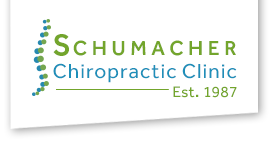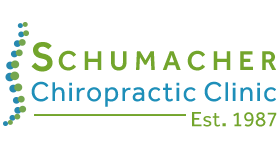Teething 101 in Hopkins MN
Teething 101 In Hopkins MN

Many pediatricians, scientists, researchers and parents have disagreed about the concept of teething, but any mother of a little one over the age of 1 year will tell you that whether or not it’s just a coincidence their babies are miserable when their teeth start coming in.
When newborns are born they have “teeth buds” just under the gums, and while there is no set time that those teeth will begin to appear, typically their first tooth will begin to break through between five and seven months. Some infants can begin teething in Hopkins MN as early as 3 months and some as late as 9 months to even a year.
Typically the incisors (top and bottom middle teeth) appear between the age of six to seven months. Between the ages of 7 to 9 months the incisors will come in on each side of those first teeth that appeared. Around the age of 8 months, a baby may have 8 teeth.
The first molars begin to break through at 10 to 14 months and the canines at 15 to 18 months. Finally, the second molars will come in typically between the age of 2 to 3 years.
Teething Symptoms in Hopkins MN
Many experts actually disagree about whether or not teething even has symptoms, but most parents report unique changes prior to the appearance of their infant’s teeth. For instance, when a baby is teething their saliva production increases. This has caused many symptoms including drooling, which can sometimes cause a rash on their chin, coughing or gagging on the excess saliva and loose bowels due to swallowing that excess saliva.
Additional teething symptoms can be irritability or a desire to gnaw on anything within grasp. The pressure of the tooth trying to break through the gums can cause discomfort leading to irritability. Many babies instinctively reach for something to gnaw on as pressure on the gums will sometimes counteract the pressure caused by the teeth.
Misdiagnosing Teething
Most problematic for young parents is that teething symptoms may very often be mistaken for common childhood disorders. Pain from the gums can travel to the cheek and even the ear causing an infant to rub their cheek or tug on their ear. Many young parents are taught to watch for this as a sign of an ear infection and so, in response, a parent will take their child to the pediatrician. The problem is that an irritable, teething infant will probably have been crying as well which, combined with the effects of teething, can lead to red ear, commonly leading to a diagnosis of Otitis Media and an unnecessary prescription for antibiotics. It is very important as a parent to not be quick to accept this diagnosis.
The American Academy of Pediatrics
(AAP) set new guidelines in 2004 to regulate overlyprescribed antibiotics in the treatment of Otitis Media, having found that prescriptions were being written when they were not necessary. The AAP suggests waiting 72-hours before giving a
child antibiotics as typically it can be water behind the ear (or teething symptoms) causing a false diagnosis.
Another way to avoid getting an unnecessary antibiotic prescription is to demand a culture test. There really is no way to confirm Otitis Media without one.
Common Cold or Cutting Teeth
Another common childhood disorder confused with teething is the common cold. Since teething can lead to runny nose, mild/low-grade fever and coughing or
sneezing, many infants have been treated for a cold or allergies when it was nothing more than a breaking or cutting tooth.
It’s important to realize that our bodies were designed to do things in a certain way and not everything needs to be treated medically.
When Soothing Symptoms
Recognizing that there really isn’t anything that can be done medically is little comfort to a parent who is dealing with a fussy, cranky, miserable little baby.
Knowing what to do to ease their discomfort and relieve some of the pain is empowering to a concerned parent potentially feeling powerless.
Teething Symptoms and the Aware Parent
“…Teething symptoms may very often be mistaken for common childhood disorders.” © 2010 The Wellness Family
The first thing to understand is that there are natural, holistic choices, and it is never going to be necessary to resort to pain relievers or gum-numbing agents.
These items can actually do more harm than good, and aspirin should never be given to a baby even to rub on their gums, as it has been linked with the potentially deadly disease, Reye’s Syndrome.
Acetaminophen should also never be used, as the long-term effects of the chemicals in pain relievers on infants have not been recorded.
With regards to gum-numbing agents, while they have been found to be effective, it is very dangerous. Popular pediatrician, Dr. Sears says on his website, “We do not recommend commercial gum-numbing substances because it is difficult to learn their exact contents and find research that validates their safety.”
The Right Way
The only over-the-counter teething treatment approved by homeopathic and holistic professionals are teething tablets. Designed specifically to help babies with their teething symptoms, these tablets dissolve immediately in the mouth and naturally relieve swelling and pain.
Additionally, there are many home remedies that can help to relieve pressure, pain and discomfort, bringing peace to the baby and the household.
The first thing to understand is that the baby’s gums are sore and aching. A sharp tooth is trying to push through the gums and this is what is causing the discomfort and resultant fussiness. Anything that will counter-balance that pressure is going to bring relief.
Many parents have reported that a clean wet washcloth put in the freezer for a short time, then given to the baby to gnaw on brings welcome relief. The cloth can be dipped in water or strong chamomile tea. The choice of tea adds a calming agent and is soothing to an infant’s tummy. Similarly, a frozen banana given to the baby will give them something natural to gnaw on.
Some have suggested a frozen bagel, however, most bagels are made with wheat or wheat byproducts and giving these items to a child too soon can lead to food allergies when they are older.
Ice in a sandwich bag, then wrapped in a cloth works well, and for the older child already eating solid foods, cold soft foods such as applesauce or diced papaya can bring relief.
The most important thing to remember is not to use a remedy if it isn’t something you would typically give your child. Parents have been told to dip their finger in Crème d’ Menthe (alcohol) and rub it on the baby’s gums to “naturally” numb the gums and relieve the pain while soothing the baby’s tummy. While all of that may sound good in theory, remember that baby’s should not be given alcohol.
The Chiropractic Factor
It’s important to not interfere with the natural routine of teething. Every child is different, but teething has been proven to be hereditary. If an infant’s parents’ first tooth appeared when they were three months, then it’s safe to assume this will be generational. It’s not even unusual for a baby to be born with a tooth already in place. Recognizing the body’s innate ability to work as it was designed, Family Wellness Chiropractors guide parents in natural ways to care for their children.
Monday
9:00am - 12:00pm
2:00pm - 6:00pm
Tuesday
9:00am - 12:00pm
2:00pm - 6:00pm
Wednesday
9:00am - 12:00pm
2:00pm - 6:00pm
Thursday
9:00am - 12:00pm
2:00pm - 6:00pm
Friday
9:00am - 12:00pm
2:00pm - 6:00pm
Saturday & Sunday
Closed
Schumacher Chiropractic Clinic
7900 Excelsior Blvd Suite 100
Hopkins, MN 55343



